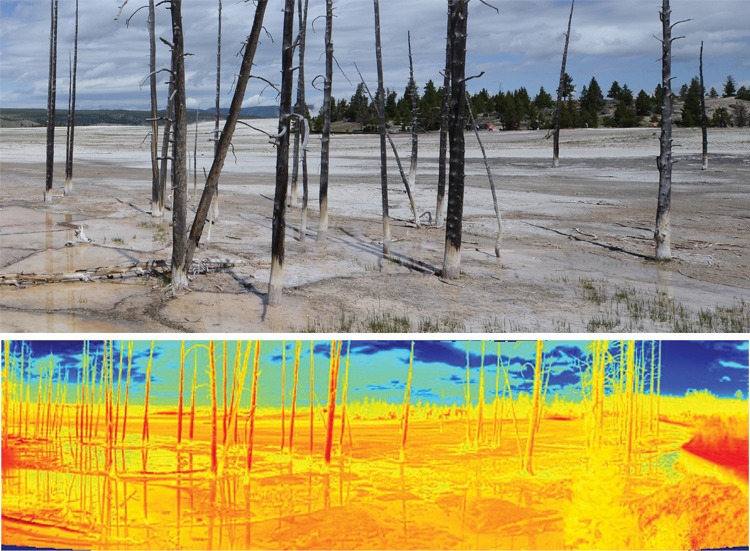Feature
Infrared Yellowstone
Eruptions of boiling geysers; silent, bubbling hot springs; turbulent, hot outflows mixing into cold rivers—the breathtaking thermal features of Yellowstone National Park become both art and science when observed with close-up infrared thermal imaging.
 Dead lodgepole pine tree trunks in the Lower Geyser Basin, imaged in June 2016, create artistically colorful scenes in the IR (above) from a relatively colorless visible scene (top). The top image includes only the right-hand side of the scene shown in the IR image.
Dead lodgepole pine tree trunks in the Lower Geyser Basin, imaged in June 2016, create artistically colorful scenes in the IR (above) from a relatively colorless visible scene (top). The top image includes only the right-hand side of the scene shown in the IR image.
Many associate the name of the world’s first national park—Yellowstone, located in the U.S. states of Montana, Idaho and Wyoming—with the “Old Faithful” geyser. Every half-hour to two hours, this natural wonder ejects thousands of liters of boiling water and hot steam in a huge white fountain, for a few minutes, to heights of up to 56 m.
…Log in or become a member to view the full text of this article.
This article may be available for purchase via the search at Optica Publishing Group.
Optica Members get the full text of Optics & Photonics News, plus a variety of other member benefits.
